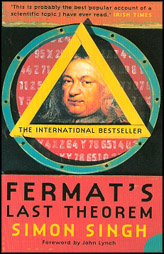The Emperor Of All Maladies: A Biography Of Cancer
Book Summary of The Emperor Of All Maladies: A Biography Of Cancer
The Emperor Of All Maladies: A Biography Of Cancer by Siddhartha Mukherjee is a book that tells the story of Cancer as a disease and as a malignant enemy that humanity has battled with for millennia.
Summary of The Emperor of All Maladies: A Biography Of Cancer
This book by award winning writer Siddhartha Mukherjee is an interesting study of cancer in various aspects. It showcases the history of cancer through the ages and also a study of the disease from a cellular biologist's point of view. It is a chronicle of the war on cancer and the various research efforts to study and combat this dreaded disease. The book brings up the various landmarks and breakthroughs in cancer research. It narrates the history of cancer research, from primitive radiation therapies to the most modern breakthroughs in genetic research.
The author deals with the human side of the impact of the disease. He looks at the dynamics of the doctor-patient relationship while dealing with the disease, the impact of the disease not just on the patient, but also on the family and also of the various misconceptions about cancer.
Starting with the story of the Persian Queen Atossa, who had her Greek slave cut off her breast to stop the spread of the disease, the book kicks off with an interesting account. It traces the various stages in the treatment of the disease, from the early attempts at radiotherapy and chemotherapy in the nineteenth century to the speeded up research in the twentieth century as cancer became the most dreaded disease that threatened human and animal lives. The book also details the meeting of Mary Lasker and Sydney Farber, who eventually formed an alliance with Richard Nixon and passed the National Cancer Act in 1971.
Towards the later part of the book, Mukherjee turns towards the main subject: the cancer cells. He describes how the abnormal cells' appearance itself seem to reflect the malignancy of the disease. These are cells that are programmed to multiply without a check, with no turn-off switch like in normal cells.
The author also describes the discovery of breakthrough drugs like Gleevac. This book provides an interesting perspective on cancer, its history, humanity's long battle with the disease and ultimately on the long road ahead in this war, a war that is by no means near its end.
General Reception
The Emperor of All Maladies: A Biography of Cancer won for the author the 2011 Pulitzer Prize for General Nonfiction. The book was listed as one of the Top 10 Books of 2010 by Oprah Magazine, New York Times and Time magazine. It was described by Time magazine as one of the 100 Most Influential Books in the last 100 years.
The Emperor Of All Maladies: A Biography Of Cancer by Siddhartha Mukherjee is a book that tells the story of Cancer as a disease and as a malignant enemy that humanity has battled with for millennia.
Summary of The Emperor of All Maladies: A Biography Of Cancer
This book by award winning writer Siddhartha Mukherjee is an interesting study of cancer in various aspects. It showcases the history of cancer through the ages and also a study of the disease from a cellular biologist's point of view. It is a chronicle of the war on cancer and the various research efforts to study and combat this dreaded disease. The book brings up the various landmarks and breakthroughs in cancer research. It narrates the history of cancer research, from primitive radiation therapies to the most modern breakthroughs in genetic research.
The author deals with the human side of the impact of the disease. He looks at the dynamics of the doctor-patient relationship while dealing with the disease, the impact of the disease not just on the patient, but also on the family and also of the various misconceptions about cancer.
Starting with the story of the Persian Queen Atossa, who had her Greek slave cut off her breast to stop the spread of the disease, the book kicks off with an interesting account. It traces the various stages in the treatment of the disease, from the early attempts at radiotherapy and chemotherapy in the nineteenth century to the speeded up research in the twentieth century as cancer became the most dreaded disease that threatened human and animal lives. The book also details the meeting of Mary Lasker and Sydney Farber, who eventually formed an alliance with Richard Nixon and passed the National Cancer Act in 1971.
Towards the later part of the book, Mukherjee turns towards the main subject: the cancer cells. He describes how the abnormal cells' appearance itself seem to reflect the malignancy of the disease. These are cells that are programmed to multiply without a check, with no turn-off switch like in normal cells.
The author also describes the discovery of breakthrough drugs like Gleevac. This book provides an interesting perspective on cancer, its history, humanity's long battle with the disease and ultimately on the long road ahead in this war, a war that is by no means near its end.
General Reception
The Emperor of All Maladies: A Biography of Cancer won for the author the 2011 Pulitzer Prize for General Nonfiction. The book was listed as one of the Top 10 Books of 2010 by Oprah Magazine, New York Times and Time magazine. It was described by Time magazine as one of the 100 Most Influential Books in the last 100 years.
Top rated books in this category































